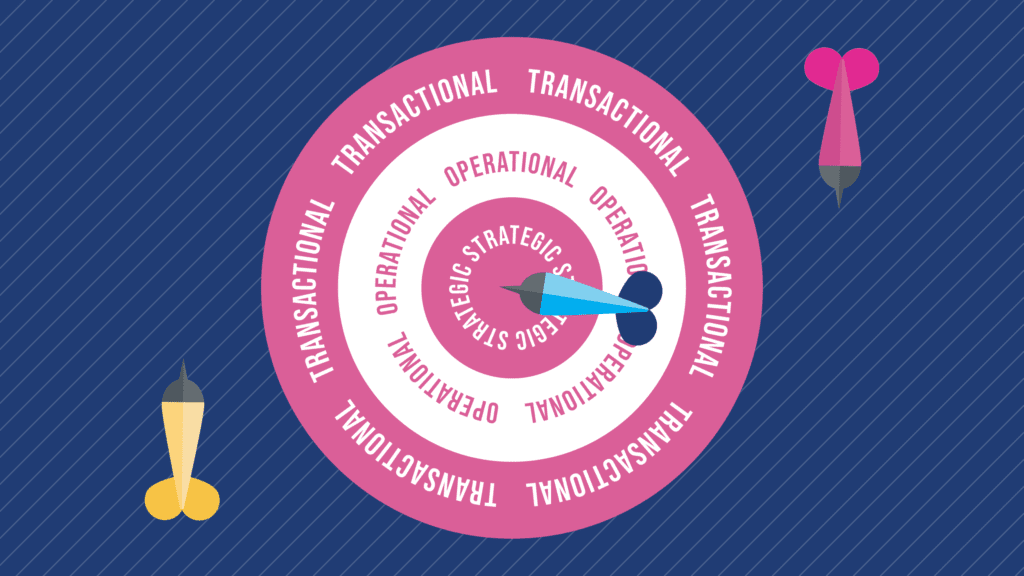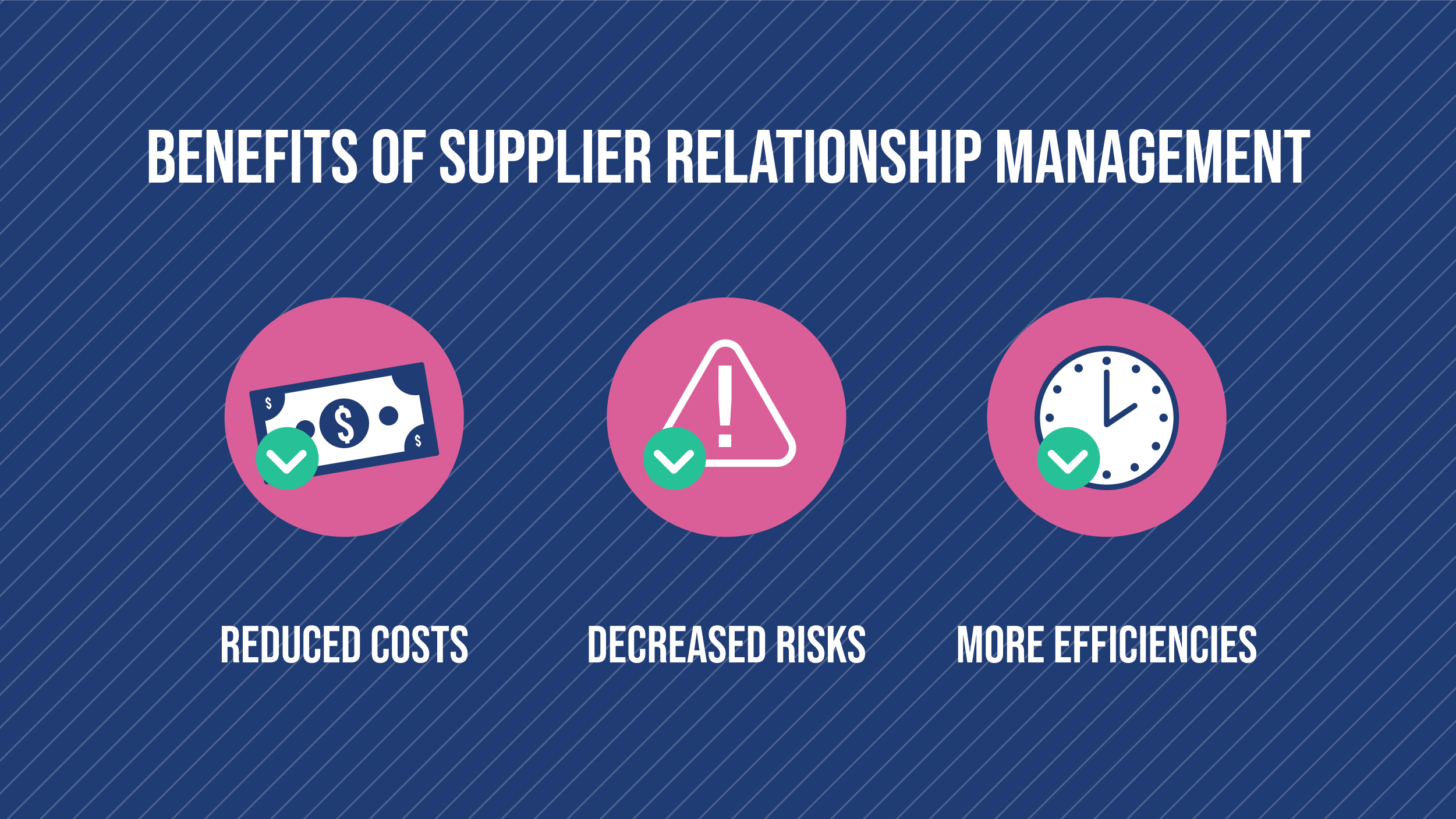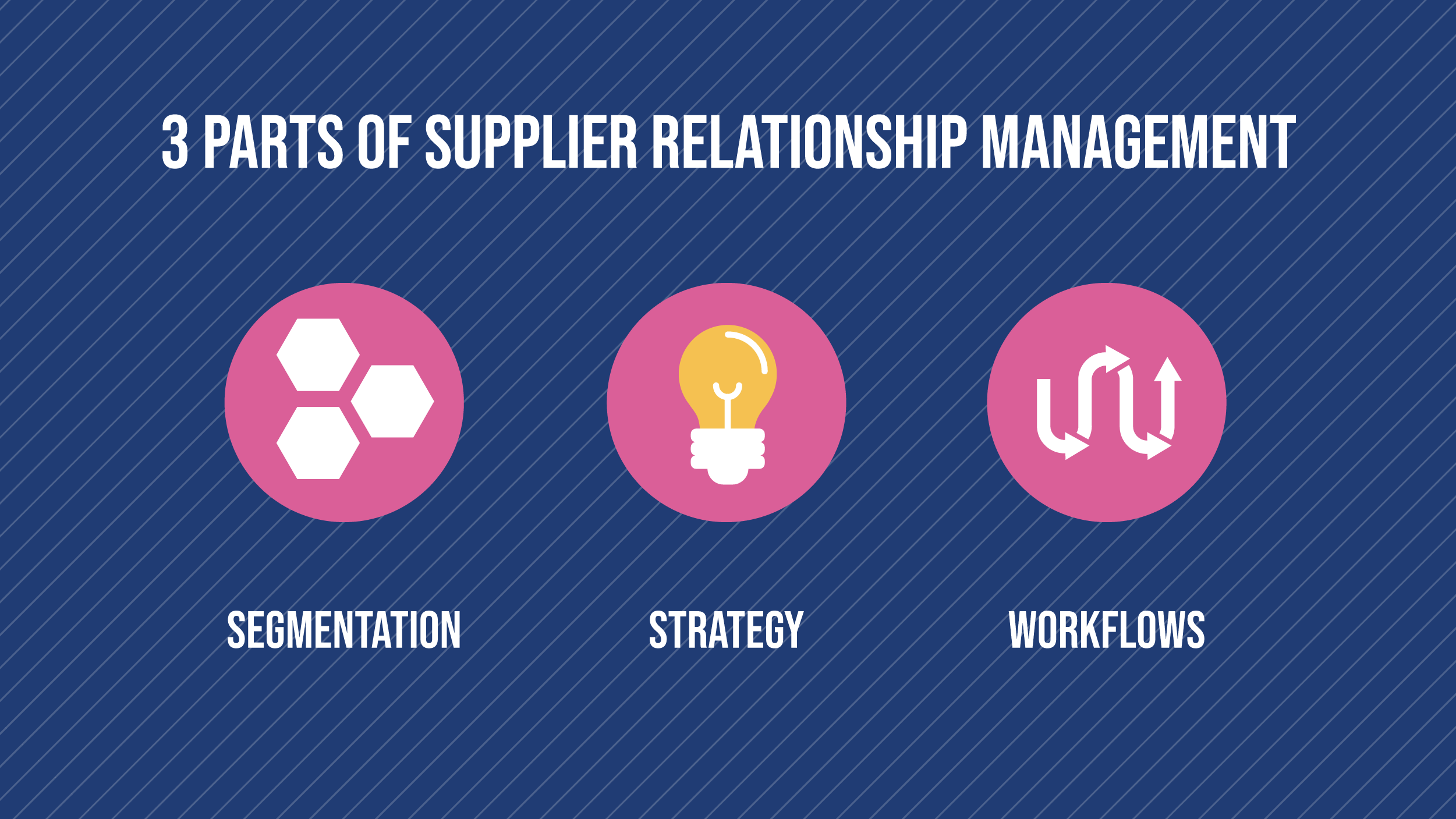Hitting the Bullseye with Supplier Relationship Management

There are a few different levels to supplier relationship management.
Are you able to pick up the phone, politely and clearly order your materials, and hang up with the expectation that your request will be fulfilled in an appropriate length of time? Great, you’ve achieved the most basic level of supplier management. While there’s not much added value for either side, at least you’re getting your materials and they’re getting paid.
At the second level, both sides should start to see some added value. This might come in the form of some type of discount, or perhaps the two parties just find it easier to work with one another because communication flows effortlessly and cuts down on admin time. Either way, at this level of supplier relationship management, both sides have a preference for working together.
At the peak of supplier relationship management, you and your vendors are working in lockstep with financial and operational incentives for both sides. The relationship can then evolve from a transactional one to a strategic alliance. When buyer and supplier relationships are aligned at the core, both companies can take advantage of opportunities that have benefits not available to others. These benefits might include early payment discounts, less administration overhead, and long-term planning.
But you don’t get to this third level overnight, and it takes a lot more work than just sending a Christmas card once a year. To reach this level, you’ll need established workflows, knowledge of each other’s business cycles, and the right technology to power the relationship.
In this post, we’ll discuss the basics of supplier relationship management, provide tips to streamline your workflows, and outline how to turn your relationships with your suppliers into a strategic advantage.
What is Supplier Relationship Management?
Supplier relationship management (SRM) is the culmination of all the processes, procedures, and performance reporting between an organization and its suppliers. It’s the structure of all the effort an organization puts forth to try and attain the maximum value from its suppliers.
Organizations with effective supplier relationship management typically enjoy:
- Reduced costs – Early payment discounts and volume pricing are both examples of what your organization can achieve with active supplier management.
- Decreased risks – Better collaboration and systems can help you detect fraud, inaccurate or double payments, and other mistakes.
- More efficiencies – Strategic alignment between buyer and seller fosters a cycle of continuous improvement which includes fewer unwelcome surprises, delays, and miscommunications.

SRM is a proactive endeavor, not a remedial reaction to poor performance from a supplier. The primary goal of supplier relationship management is to record and use KPIs to attain hard-to-reach benefits in your supply chain.
How Does Supplier Relationship Management Work?
As we mentioned, SRM is a proactive pursuit, which means it actually begins long before you engage with a supplier. By creating a relationship structure in regard to KPIs, processes, and communication, you set the tone for the relationship and the expected outcomes.
Every organization is different, but this is an outline for general SRM:
Supplier Segmentation
Take a look at your existing supplier base and come up with categories. Common categories might include:
- Location
- Monthly spending
- Business impact
Or, you might want to use a more sophisticated supplier system such as Kraljic’s Classic Supplier Segmentation Model, which map suppliers against two key factors: risk and profitability.
Either way, the reason you must first segment your suppliers is because developing and executing an SRM program requires time, effort, and money. Since no organization has unlimited resources, it’s vital to understand where those resources will have the biggest impact.
Create and Measure Supplier Strategies
With your suppliers properly segmented, it’s now time to determine what you want to get out of the relationship. Each supplier has a different role in your business operations, so it’s important to create each strategy individually.
For example, for one supplier, on-time deliveries might be the most important performance metric. For another, it might be cost per unit. By determining exactly what you consider high performance for that supplier, you can start to track KPIs that will allow you to measure their output. By measuring your desired outcomes, you can start to apply SRM tactics to move the needle in the way you want it to go.

Implement Processes and Workflows
Supplier segmentation and strategies give you a direction to go, but your actual progress will be measured by the quality of your systems. The entirety of supplier relationship management can be summed up in approximately 5 steps:
- Supplier selection
- Supplier onboarding
- Supplier engagement
- Supplier payment
- Supplier evaluation
Each of these steps should have a documented workflow and the technology to run it. Bonus points if your tech adds some intelligence to a workflow, such as AP automation for supplier payments.
Now let’s get into the details!
Best Practices for Supplier Relationship Management
With the basics in place, let’s examine how you can bring your SRM system to life with some implementation tips and advice.
Data
Your ability to proactively manage your relationships with suppliers lives and dies with your data. Accurate, real-time, and 360º data will provide actionable insights that you can use to drive towards your key results. Inaccurate, lagging, or incomplete data will be a constant frustration and waste of time, or worse, drive a wedge between you and your suppliers.
At a minimum, you’ll need access to high-quality in the following areas:
- On-time deliveries
- Lead time on deliveries
- Suppliers managed
- Managed spending
- Price variances
- Meets purchase order requirements
- Quality of shipments
- Invoice processing errors/time to payment
Note that these data points will likely originate from a few different departments/teams within your organization. For tips on data visualization, check out our related post on building a supplier dashboard.
Technology
In order to add structure to your SRM program, you’ll need to house your processes, workflows, and data in one or more technology systems. Implementing the appropriate tech stack is essential in order to create accountability, efficiency, transparency, and automation.
Whether you choose an all-in-one platform for SRM or integrate various systems, you’ll need to ensure your solution covers the following areas:
- Customizable, real-time dashboards
- Invoice management
- Automated approval workflows
- Invoice matching
- Vendor portals
Technology is key to being able to spot risks and opportunities before they occur, automate workflows, and provide structure for your entire SRM program.
Collaboration
The last piece of advice we have is to understand that supplier relationship management is a collaboration across multiple teams at your organization. While procurement may own the communications with your suppliers, the AP team is the one making sure they get paid on time. After all, timely B2B payments are the bar for healthy supplier relationships—if you can’t pay on time, no amount of communication or ‘shmoozing’ can repair the relationship.
For this reason, it’s imperative that your SRM system is designed with cross-team collaboration in mind. This means your platform needs to have role-based access and permissions, a notification system for tasks, and clear handoffs for accountability.
SRM is a team effort where multiple departments add value to the program. Ensuring that each team has the proper tools to execute their function is an absolute necessity.
How AP Automation Enhances Supplier Relationship Management
SRM is heavily dependent on top-notch accounts payables processes—negotiating discounts and payment terms, review and approval of purchase orders and invoices, matching supplier information, etc., are all crucial components of getting suppliers paid. The more efficiently your AP team can accomplish these tasks, the happier your suppliers will be.
An AP automation platform like Stampli can help turn your accounts payable processes into a strategic function that creates value in your SRM program.
Stampli provides tools like the Vendor Portal where suppliers can access important data—like the status of an invoice—at any time. This streamlines communications and allows for asynchronous work. You can learn more about how suppliers can use Stampli’s Vendor Portal here.
Additionally, Stampli is built to track all relevant metrics that you’ll want to include in your supplier dashboard to give you a fully transparent procure-to-pay process.
Ready to see how Stampli can help you build an effortless supplier relationship management program? Schedule a demo with one of our AP Heroes today!